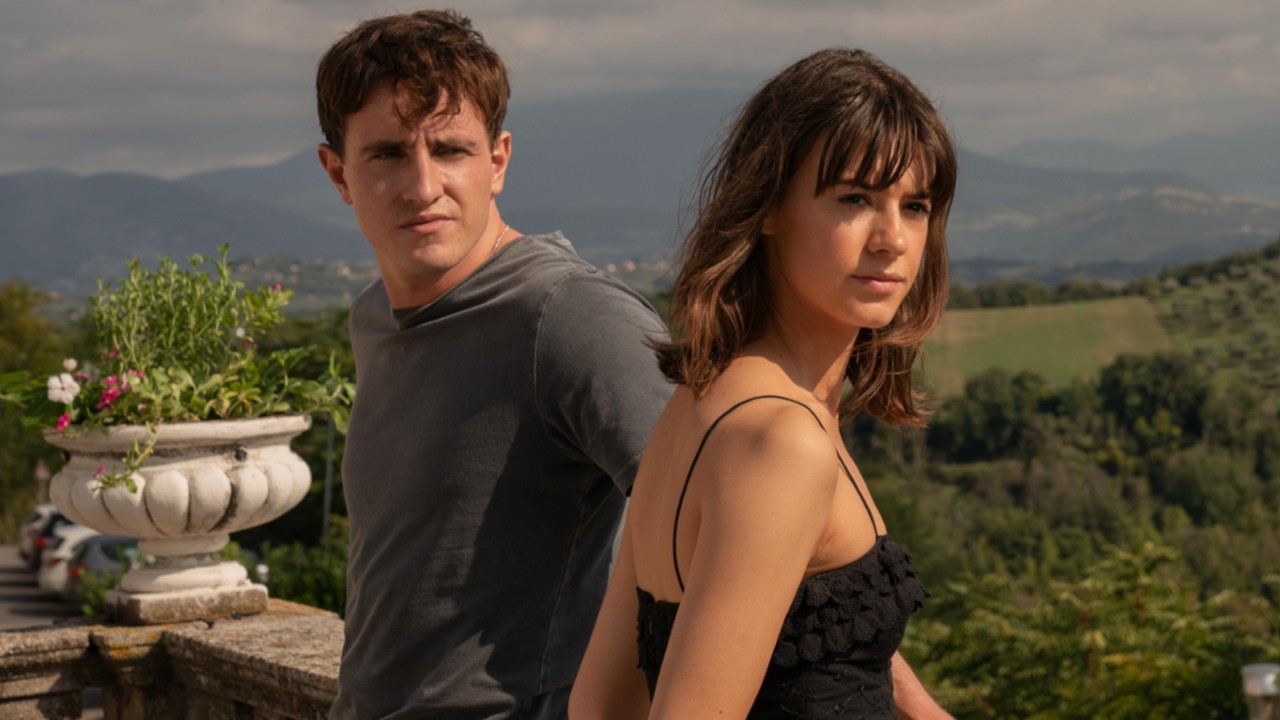Sundance Review: Blue Valentine

You may remember that our friend Michael Gottwald contributed a review from the New Orleans Film Festival last fall. Now he's up in Park City for Sundance and is chiming in with his thoughts on Blue Valentine, which CB's designated Sundance rep Katey has not yet managed to see.
Blue Valentine has been one of the most anticipated films at Sundance, and comes with a formidable amount of indie pedigree. A director known for edgy and acclaimed but easy-to-miss documentaries. A creative team (producer, art director, cinematographer) that cut their teeth on films like Half Nelson, and Stephanie Daley. Two leads whoah have demonstrated commitment to telling small or unconventional stories through independent means, despite faces that could easily be found on the poster for Hollywood’s next Big Thing. With so such built-in hype, I wondered which Sundance it would represent: the fresh, challenging “cinematic rebellion” that the festival’s new (ludicrous) logo and president promise, or the more conventional, star-studded “Indiewood” stuff that is often dislocated, dressed down, and dropped at Sundance after being packaged on Wilshire Boulevard.
The answer is something in between, or, more accurately, both. Interestingly the film’s past/present structure reflects this divide.
In the present, everything’s difficult… even if it doesn’t look it. Dean and Cindy are a married couple in the bucolic, woody exurbs of Pennsylvania. He paints houses, she’s a resident at a the local hospital. They have an adorable daughter together, and the pet dog has just turned up dead. These initial details of plot, profession, and setting are merely incidental, as director/co-writer Derek Cianfrance makes it clear he’s singularly interested in the couple, as a couple.
With their world almost always tightened to medium close-ups, the camera elegantly drifts from one of their faces to the other, charting little gestures, reactions, pauses, while all other action and people pass in and out of the shallow focus of the rest of the frame. He’s all fun and games with his kid, and she wears the weight of responsibility visibly, all wound up while he’s an impulsive, passionate goofball. When the dead dog provides a reason for their daughter to spend the night at her grandfather’s, Dean coaxes Cindy into a night of having fun, “getting drunk and making love” at a cheesy theme motel. The ostensibly benign dynamic established back home incites obviously all-too-common arguments about nothing on the drive there, and what didn’t at first seem like a last stand for their relationship suddenly becomes it; they’ve selected the “Future Room,” and so the stakes are set.
Cut to the past, when everything’s simple. Brimming with all the traditional if not sometimes cliched sweetness of a well-told boy-meets-girl story, these segments use grainy 16 millimeter film to wrap the younger, happier versions of Dean and Cindy in the delicious cloud of nostalgia. He’s listless, scrappy, got a hop to his step, from Florida but wears an accent and style from Brooklyn. With his leather jacket, confident drawl and unwavering focus on the target of his affection, he channels the Bruce Springsteen of The Wild, the Innocent, and the E Street Shuffle days. Cindy’s all long golden hair, skirt & cowboy boots, going to college, unhappy with her comically jock-ish boyfriend, but nothing but smiles as she slowly caves to Dean’s persistence, affection, and ukulele.
It becomes clear that while Ryan Gosling’s character is a fairly simple guy, with simple wants and expectations, the actor’s sheer appeal and talent compel us to watch him like he’s Olivier doing Hamlet or something. And in the hotel room, when these simple wants aren’t reciprocated, it makes for raw, challenging drama, depicting that rarely seen time in a relationship when suddenly the small things add up, and you find yourself trying to save something you didn’t know was at risk. Holed up in the hell of a windowless, blue lit, twirling-bed joke (complete with its own unnerving expectations of couples), these two veer from romance to self-inflicted pain in a matter of seconds, and the camera never flinches once.
CINEMABLEND NEWSLETTER
Your Daily Blend of Entertainment News
But here the appeal of one lead casts an asymmetical shadow on the proceedings. While Dean may mess up and get irrational, Cindy never comes off as nearly as sympathetic. This is not to fault Michelle Williams, as she’s excellent at playing characters who hold their deck close to their chests. The conceit is that a key plot development in the flashback is supposed to inform how she acts with him in the present—after all, we all know those arguments about nothing are never actually about nothing—but when all is said and done, she comes off as a definitively unknowable character. The complex, arty version of this film knows that there are no simple answers, that people don’t have easily understandable motivations, especially in matters of love. But in a film that goes to great lengths to bring us close, aesthetically and emotionally, to this couple, you’d think it’d be smart enough not to risk us taking sides.
For more of our Sundance 2010 coverage, click here.









